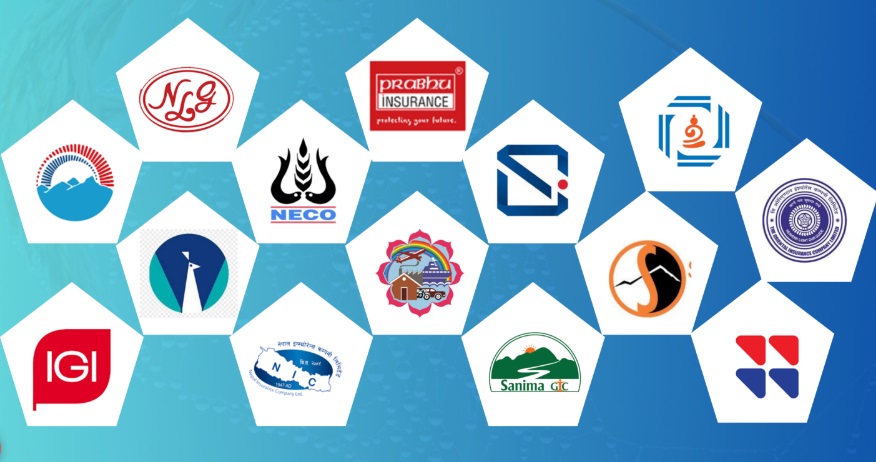Kathmandu. The Chief Executive Officer of United Ajod Insurance is #Kamal Gautam. He was appointed as the CEO of United Ajod in the fourth week of Mangsir. The newly appointed CEO Gautam has experience of working in various banks and financial institutions for more than 3 decades, including holding the position of CEO in a development bank and a non-life insurance company. He has completed his studies up to MBA from Tribhuvan University. Summary of the conversation with the same CEO Gautam on ##Insurance Talk####:
##
## ##It has been 1 month since you took over the leadership. You took some time to rest. You stayed out of the insurance sector for a while. You have come back to take over the leadership. What does the insurance sector look like in the meantime?
##
## There is no significant difference. If you look at it, it seems that my career history has been different from that of other ordinary people. In my 34-year career, I have worked in about 11 organizations. In 4 of them, I held the position of CEO. Therefore, I have experienced many problems, interacted with many people, and met many helpful people. This makes it easier for me to adapt to a new place.
It seems that it is not very easy to reconcile a merged organization, a new CEO, the sentiments of two investors and employees, and business, right?
This is certainly a challenge. However, it has been almost a year and a half since the merger. In the meantime, many problems or challenges have been settled by friends. I myself have worked in merged organizations before this, have been the CEO of the merged organization, and have actively participated in the process of merging Everest Insurance with Himalayan Insurance, so I am aware of these problems and challenges. I can also manage where and how to resolve them.
You are a person who has been leading the bank for a long time. How easy is it to work in banking and insurance? How satisfying is it?
When I worked in a bank, banking is different from today. Today, banks are facing many challenges. Although there were some different challenges at that time, they did not have to face as many challenges as they do now. The banking sector is a more regulated and systematic institution than the insurance sector. However, in terms of risk, banking is more risky.
But, you are saying that banking is regulated and the NRB believes in better regulation than it used to. But, you are now practicing in insurance. Isn’t the regulation like that in insurance even now?
This is of a different nature. It cannot be exactly compared with the National Bank. Because the nature of the insurance sector is different all over the world. Even looking at its regulatory practices, the banking and insurance sectors are different. In some countries, it is seen that the same regulator has been regulating both banking and insurance.
When you came here from the bank, you had worked in the bank a long time ago. You have now come to the insurance sector. It was felt that the banking sector at that time was highly regulated. Now you are in the insurance sector. And when comparing these two, the National Bank used to keep the bank in such a good condition 10 years ago. When the insurance sector reaches a point where there is still no such regulation, there is also a doubt as to whether the risks borne by the insurance sector are not managed in the right place?
I have also done that analysis many times. From a regulatory perspective, 10 percent of the money in a bank belongs to investors, while the remaining 90 percent belongs to the general public. Therefore, when making decisions, the National Bank always prioritizes the investment of those 90 percent of the citizens. The National Bank is bringing policies keeping in mind the interests of depositors. However, in the insurance sector, who bears that risk and whether the general public gets the claim payment or not, the insurance regulator should be vigilant. For that, it is necessary to pay attention to whether there is sufficient capital or not and whether there is sufficient reinsurance. It seems that the Insurance Authority is paying a lot of attention to that. Because the Authority is increasing capital. There have been efforts to bring good quality insurance, to license reinsurance in the local area, etc. However, I think the role of the regulator is less visible since the public’s money is not at risk.
You talked about capital. Nepal’s insurance companies and banks have also started saying that they are being burdened by the burden of capital. Have we reached that point in the insurance sector? There is not a big gap between the business you do annually and your capital.
I have said this on other platforms and formal programs as well, Nepal’s insurance sector has more capital. Because when we add up the total premium in the insurance industry and the capital of all insurance companies, the ratio is almost 1:1. The situation of doing one rupee of business with one rupee of capital is in itself ‘over capitalization’. That one rupee of business cannot adequately service the one rupee of capital because it does not even cover the cost of doing business. This discourages business.
Will there be a problem in institutional governance?
In such a situation, there will definitely be a problem in institutional governance. Because there is tension in that small market. There is unhealthy competition. It is also triggered by other parties. If the market had increased by 30-40 percent today along with the increase in capital, or if our GDP had increased by 7-8 percent, this gap would probably have been closed in 1-2 years. At the same time, on the one hand, the regulator decided to increase capital, and on the other hand, there was a situation where the economy was slowing down. Therefore, the market did not support the regulator’s decision to increase capital.
Doesn’t the pressure on managers increase when the business is not in a position to make it big? Because the big investors on the board want a fair return anyway. If you can’t give a return through a regular process, then you will create problems in doing your daily work, right?
Creating problems in your daily work depends on the nature of the investor. However, the main concern of investors is the return on investment (ROI). The main basis for evaluating the performance of the CEO is the return on investment. In that case, if the return on investment of the competitor’s company is higher and your company’s is lower, the blame goes to the CEO. Therefore, CEOs are under a lot of pressure to work in the current situation.
Is that why we have to raise premiums anyway, we have to run, we have to cut rates a little bit now and show more tomorrow, we have to show other expenses, and we have to get a clean balance sheet?
I cannot accept that outright. Since the market is small, there is unhealthy competition due to the number of competing companies and capital. That is what you are saying. It has to be done or any company has participated in it to some extent. It cannot be said that everyone is engaged in such work to the same degree. Because I don’t think any CEO has done this job willingly or happily.
Are the circumstances mentioned earlier forcing it?
Some percentage of circumstances have forced it.
We have to do business with such a large capital. The industry is in a 1:1 ratio. What should we do to increase its size?
It is not that its size will increase overnight. For that, overall economic development, prosperity and progress are essential. New industries should come, development works should be carried out with priority, the government should develop, work towards completing contracts quickly, and infrastructure should be built. In addition, there should be work to insure government assets and increase insurance awareness. People’s trust in insurance should be increased, and insurance companies should also be able to expand their business scope. However, this will not happen overnight, it takes time. The current time seems unfavorable for this.
The government had also decided to insure government assets. It was also included in the policy. Has there been further progress in this?
Making policy decisions is one thing. However, currently, there is a situation where the contractor has not received payment for the work done. In such a situation, the government has not paid the agricultural insurance subsidy on time. There is a contraction in budget expenditure. In such a situation, it can or cannot move towards another expenditure issue. The government may not be unwilling. However, the government’s capacity is also a matter. The government is facing a huge financial burden on social security contributions, employee pensions, and old age allowances for senior citizens and it is difficult to manage. In such a situation, does the government want to add another burden or not? It is also a question of whether or not the government wants to add another burden. Again, the challenge for the government to find public assets and get them insured is resource management. Therefore, this issue will not move forward until the government ensures its resources.
At least the government has included it in the policy. It has made a decision. Now, companies have to prepare the infrastructure so that it will be implemented sooner or later?
The company also has one hope in government property insurance. If government property is insured, it is hoped that it can be a business that can reach the current capital.
How much capital can be used to consider how much business size is good?
That formula does not exist. Because the risk situation of each geographical area is different. The kind of risk we are carrying is also different. I think there should be a three-fold premium of capital. I think there should be three rupees of premium income for one rupee of capital.






















